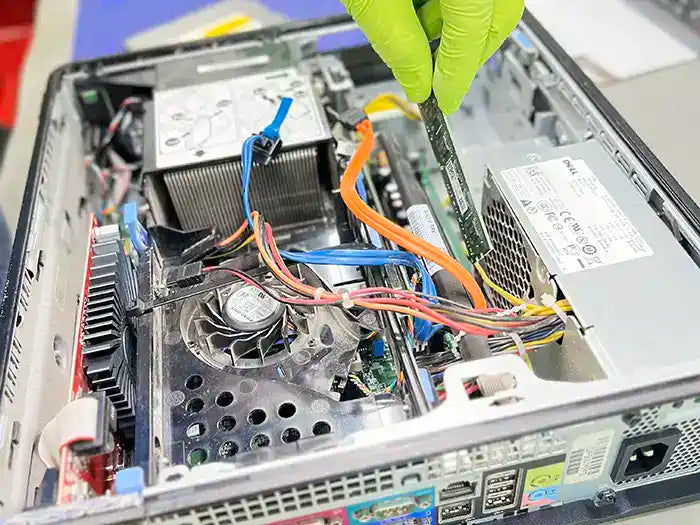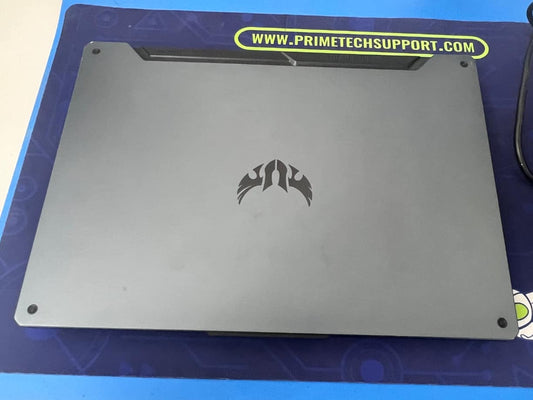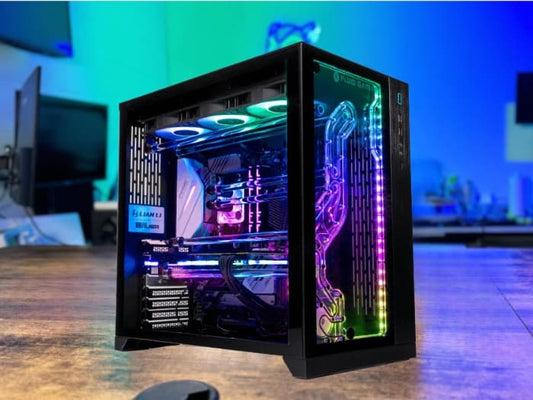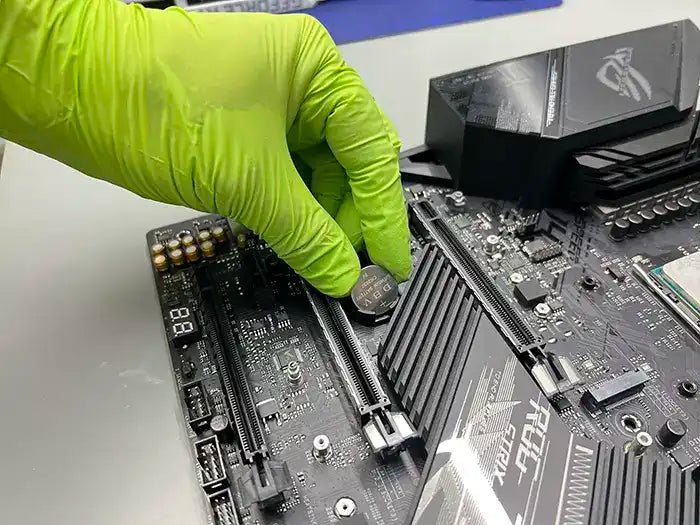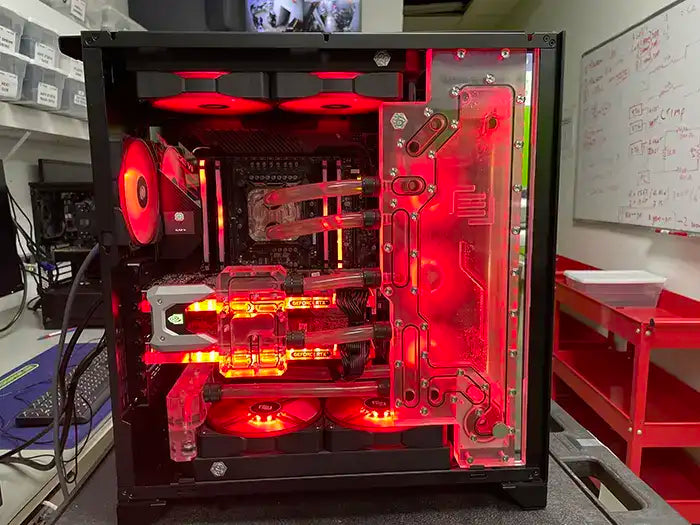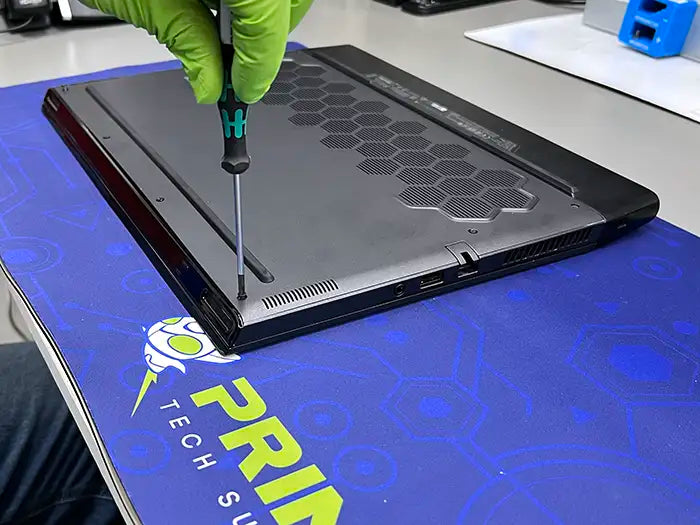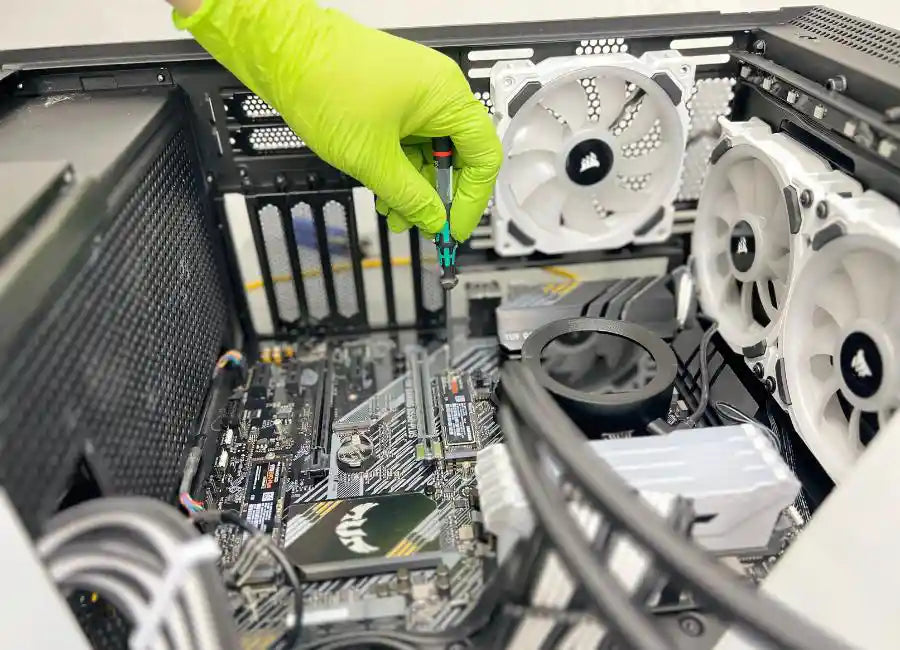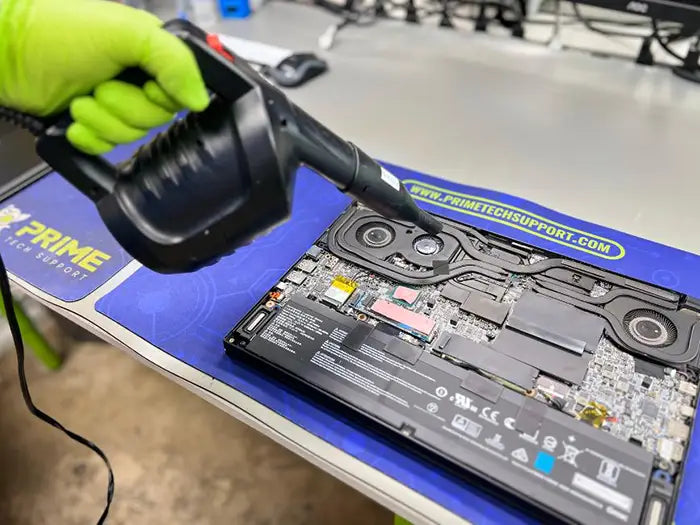Intel's Meteor Lake: A Revolutionary Leap?
Who Is This Article For?
Experts: This article addresses complex, technical topics in computer tech support, assuming extensive knowledge and experience in the field.
Table of Contents
Performance and Efficiency Enhancements
Advanced Technologies in Meteor Lake
Meteor Lake is poised to redefine future CPU designs with its innovative architecture and AI integration. This series sets a new benchmark in performance, efficiency, and scalability, potentially revolutionizing computing across various domains.
Click here if you want to Understand AMD & Intel's Nomenclature
Its advanced technologies, like the NPU and FOVEROS packaging, anticipate the evolving demands of AI and high-performance computing. Meteor Lake’s groundbreaking approach promises significant contributions to the tech world, marking a pivotal shift in processor design and capabilities.
The Essence of Meteor Lake
Intel's Meteor Lake represents the promise of a groundbreaking shift in CPU architecture, transitioning from traditional monolithic designs to a more advanced, multi-tile approach. This innovative architecture is composed of several distinct tiles: the Compute tile, Graphics tile, IOE (Input/Output Expander) tile, and the System on Chip (SoC) tile, each specializing in different functions.
The Compute tile is engineered for high-performance tasks, including demanding computations and processing needs. The Graphics tile, as the name suggests, is dedicated to handling graphical computations, significantly enhancing visual performance and efficiency.
The IOE tile plays a crucial role in managing the input/output operations, ensuring seamless communication and data transfer within the system. Lastly, the SoC tile acts as the central hub, integrating essential components like memory controllers and connectivity modules, and is crucial for the overall efficiency and power management of the system.
Meteor Lake’s transition to this disaggregated design allows for each tile to be optimized for its specific function, leading to greater efficiency, improved performance, and reduced power consumption. This architectural evolution marks a significant leap forward in CPU design, paving the way for more adaptable and powerful computing solutions.
Performance and Efficiency Enhancements
Intel's Meteor Lake introduces a 3D Performance Hybrid Architecture, a significant advancement in CPU design aimed at enhancing both performance and efficiency. This architecture integrates P-cores (Performance cores) and E-cores(Efficiency cores), each tailored for specific tasks.
The P-cores are designed to handle high-performance demands, ideal for intensive applications like gaming or content creation, where speed and responsiveness are crucial. On the other hand, the E-cores are optimized for multi-threaded tasks, efficiently managing lighter, less demanding processes, thus conserving energy.
A standout feature of Meteor Lake is the addition of extra E-cores within the System on Chip (SoC) tile, further boosting the processor’s energy efficiency. These E-cores in the SoC tile are specifically engineered for low-power operations, contributing significantly to prolonged battery life and reduced energy consumption, especially in mobile devices.
Meteor Lake’s power management system introduces an innovative approach to energy utilization. It employs a selective powering strategy, where tiles can be activated or deactivated based on the current computational requirements.
This dynamic allocation of power not only maximizes performance when needed but also minimizes energy use during less demanding operations. This Intelligent power management, coupled with the hybrid core architecture, positions Meteor Lake as a leader in both high-performance computing and energy-efficient processing.
SoC Tile
The SoC tile in Intel's Meteor Lake architecture is integral to the processor's functionality. It acts as the central hub, integrating key components like the memory controller and connectivity modules (Wi-Fi, Bluetooth). It also manages I/O operations, facilitating efficient communication and data handling across the processor.
Energy Efficiency and Low-Power Operations
A standout feature of the SoC tile is its emphasis on energy efficiency. It includes additional E-cores for handling low-power tasks. These cores efficiently manage background activities and less demanding processes, contributing to overall energy conservation, which is vital for portable and battery-powered devices.
Enhanced Connectivity and Control
The SoC tile oversees connectivity and system control, including the interactions among different tiles and power distribution. This ensures smooth communication within the processor and effective resource management.
Integration with Advanced Technologies
Designed to work with cutting-edge technologies like AI accelerators and advanced media processing units, the SoC tile enables Meteor Lake to efficiently tackle complex AI computations and media processing. This leverages the specialized capabilities of these components, boosting performance.
Adaptive Power Management
The SoC tile plays a critical role in Meteor Lake’s adaptive power management. In conjunction with Intel's Thread Director and power management algorithms, it dynamically adjusts power usage based on workload needs. This optimizes the balance between performance and power consumption for different applications.
Scalability and Flexibility
Meteor Lake’s multi-tile architecture, featuring the modular SoC tile, offers scalability and flexibility. This design allows for future enhancements and upgrades to the SoC tile without revamping the entire processor, showcasing its forward-thinking and adaptable nature.
Advanced Technologies in Meteor Lake
Intel's Meteor Lake showcases two pivotal technologies: the Intel 4 Process Technology and FOVEROS Packaging Technology. These innovations represent significant steps forward in chip design and manufacturing.
Intel 4 Process Technology
Area Scaling Improvements:Intel 4 Process Technology has achieved remarkable progress in area scaling. This development means more transistors can be packed into the same physical space, enhancing the density and efficiency of the chip.
Click here to Explore the Best Gaming CPUs in 2023: Top Picks for Elite Performance
This increased transistor density is crucial for improving overall performance and functionality within a constrained chip area.
Power Efficiency Enhancements: Alongside area scaling, Intel 4 has made strides in power efficiency. This is vital for delivering high performance while managing thermal and power constraints, especially important in portable devices where battery life and heat management are critical.
Efficient power usage also contributes to the processor's overall sustainability, aligning with contemporary environmental concerns.
Use of EUV Lithography: One of the key enablers of these advancements is the adoption of Extreme Ultraviolet (EUV) lithography in the manufacturing process.
EUV lithography allows for more precise patterning of chip features at a smaller scale. This is integral to achieving the finer transistor geometry required for Intel 4's improved area scaling and power efficiency.
This technology represents a significant leap forward in semiconductor manufacturing, offering greater precision and control in chip design.
FOVEROS Packaging Technology
Active Die Stacking: FOVEROS is a cutting-edge packaging technology that enables the stacking of active dies. This means different layers of functional silicon – such as processing cores, graphics units, and memory – can be stacked vertically, as opposed to being spread out horizontally.
This vertical integration conserves space and can lead to more compact chip designs.
High-Bandwidth, Low-Power Interconnects: One of the significant advantages of FOVEROS is its facilitation of high-bandwidth and low-power interconnects between the stacked dies. This architectural design allows for faster data transfer rates between different components of the chip while minimizing power consumption.
The efficient data pathways provided by FOVEROS are crucial for maintaining high performance and energy efficiency, particularly in complex, multi-functional processors like those in the Meteor Lake series.
Impact on Chip Design and Functionality: FOVEROS packaging technology is a game-changer in terms of chip design flexibility and functionality. It allows for a more modular approach to chip design, where different components can be developed and improved independently and then stacked together.
This modularity also means that chips can be more easily customized for specific applications or performance requirements.
The Advanced Technologies in Intel's Meteor Lake, comprising the Intel 4 Process Technology and FOVEROS Packaging Technology, represent significant strides in chip manufacturing and design.
These advancements not only boost the performance and efficiency of the processors but also open new possibilities in terms of chip architecture and application-specific customizations.
AI and the Neural Processing Unit (NPU)
Meteor Lake marks a significant leap in AI capabilities within Intel's processor lineup through the introduction of a Neural Processing Unit (NPU). The NPU in Meteor Lake is specifically designed to handle AI-related tasks, significantly enhancing the processor's efficiency in executing AI algorithms.
This dedicated AI hardware offloads complex AI computations from the main CPU, thus ensuring more efficient processing and better overall performance. The inclusion of the NPU is particularly beneficial for tasks that require real-time AI processing, such as voice recognition, image processing, and advanced analytics.
This focused approach to AI tasks not only improves the execution speed and accuracy of these operations but also contributes to lower power consumption. The NPU's integration into Meteor Lake is a testament to the growing importance of AI in everyday computing, aligning with the increasing demand for AI-driven applications in consumer and business contexts.
With the NPU, Meteor Lake stands out as a processor equipped to handle the next generation of AI challenges.
Capabilities and Integration
The Neural Processing Unit (NPU) in Intel’s Meteor Lake is a dedicated hardware component designed to enhance AI processing efficiency. Tailored for AI-specific computations, such as matrix multiplications and neural network operations, the NPU excels in power efficiency and parallel processing.
Want to know about Intel’s 14th Gen? Click here
This makes it ideal for continuous AI workloads, balancing computational power with energy consumption.
Integration with software and drivers is key to the NPU's functionality. It supports popular AI frameworks and APIs, allowing developers to easily utilize its capabilities. Optimized drivers facilitate seamless communication with the operating system, managing tasks like memory and power for efficient operation.
Intel's collaboration with OS and software vendors ensures the NPU's compatibility within the broader computing ecosystem. This integration enhances AI application performance, offering users Intelligent features and faster processing with minimal energy use.
The NPU's operation is designed to be transparent to the user, with AI acceleration occurring in the background, making it a critical component in Intel's strategy to address the growing demands of AI.
The Future with Meteor Lake
According to Intel Meteor Lake is poised to redefine future CPU designs with its innovative architecture and AI integration. This series sets a new benchmark in performance, efficiency, and scalability, potentially revolutionizing computing across various domains.
Its advanced technologies, like the NPU and FOVEROS packaging, anticipate the evolving demands of AI and high-performance computing. Meteor Lake’s groundbreaking approach promises significant contributions to the tech world, marking a pivotal shift in processor design and capabilities.
Conclusion
Intel's Meteor Lake represents a monumental shift in processor architecture, integrating advanced technologies like 3DFOVEROS packaging and a dedicated Neural Processing Unit (NPU) to enhance AI capabilities.
Its multi-tile design, comprising specialized Compute, Graphics, IOE, and SoC tiles, marks a new era of efficiency, performance, and power management in CPU development.
Meteor Lake’s innovative approach, focusing on modularity and AI-driven processing, positions it as a future-forward solution, potentially revolutionizing computing across various applications.
This series not only sets a new standard in processor technology but also paves the way for more adaptable and powerful computing solutions in the face of rapidly evolving technological demands.
For those eager to stay ahead in the world of tech and explore the capabilities of Intel's Meteor Lake, Prime Tech Support offers expert guidance and solutions.
Whether you're a tech enthusiast, a professional, or simply keen on the latest advancements, our team is here to help you navigate these exciting developments in processor technology.
Sources
- https://primetechsupport.com/products/gaming-pc-builds-computer-repairs
- https://www.Intel.com/content/www/us/en/content-details/788851/meteor-lake-architecture-overview.html
- https://www.pcworld.com/article/2055579/inside-meteor-lake-intels-14th-gen-core-cpu-optimized-for-the-future.html
- https://www.tomshardware.com/news/intel-confirms-meteor-lake-comes-to-desktops-next-year
- https://www.youtube.com/watch?v=fGqD36R7O6g&t=1s&ab_channel=TechteamGB
SAME-DAY REPAIRS
Gaming PC Diagnostic
Fast tech support for Gaming Computers. We exceed customer expectations and ensure satisfaction.





